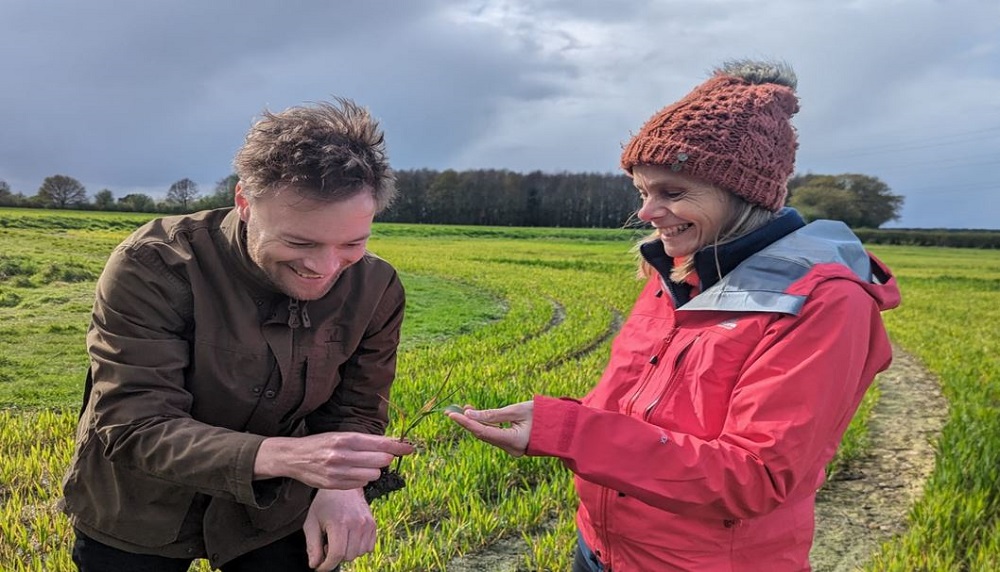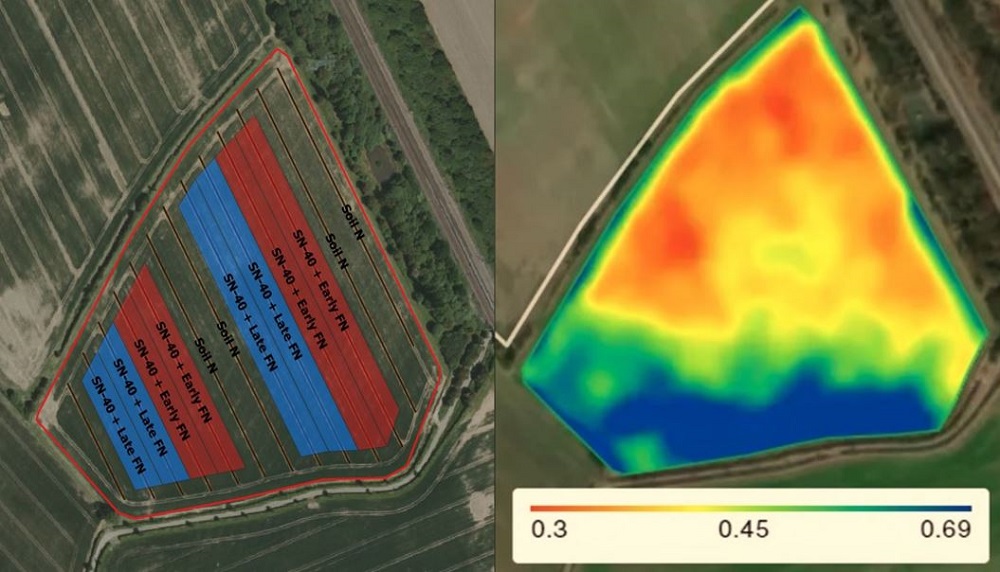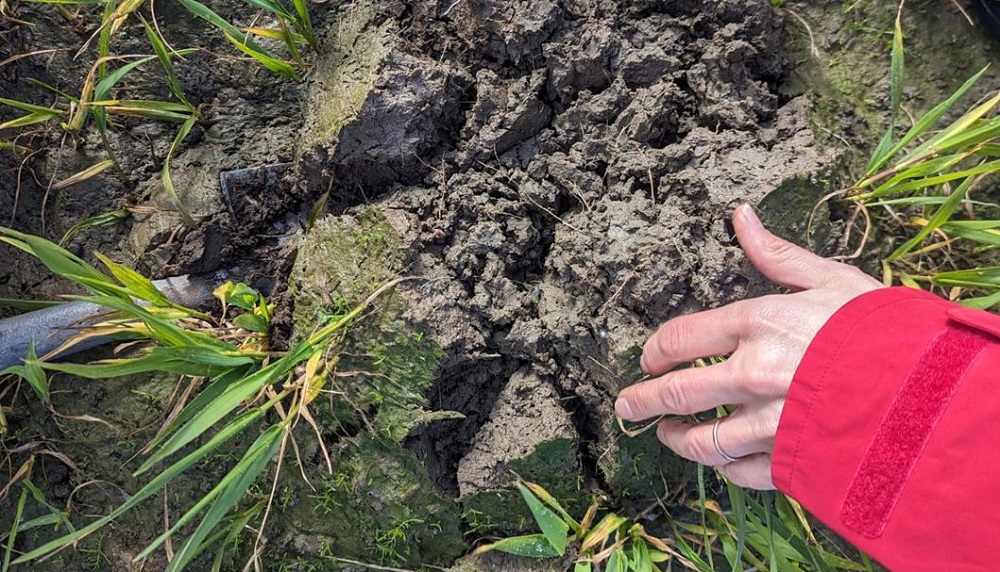Farmer tears up plans in bid to rescue struggling crops
Friday, 10 May 2024
Our Strategic Cereal Farm hosts are innovative and adaptable, two traits that come in handy during one of the most difficult growing seasons in recent memory. Senior Knowledge Transfer Manager Laura James explains how they needed to think on their feet to keep the crops and trials on track at our farm in the North.
Strategic Cereal Farm North
David Blacker is the host of Strategic Cereal Farm North, at Church Farm (Shipton, York). He wants to improve the condition of his land and uses on-farm trials to guide his decisions.
In autumn, he had clear ideas about what he wanted to get out of his harvest 2024 crops. But, as they say, man plans, God laughs.
The UK went on to experience the second-wettest August-to-February period since records began in 1837, with the East Midlands, the West Midlands, the East, and the Yorkshire and the Humber regions hardest hit.
It has not been good news for David’s winter wheat (Champion), which had been earmarked for some interesting nutrient use efficiency trials.
David wanted to optimise nitrogen use, without increasing disease risk. In particular, he wanted to avoid generating excess, lush biomass that could encourage foliar disease.
The initial plan was to test the efficiency of foliar-applied nitrogen compared to soil-applied nitrogen and study the impact on disease pressure (and investigate reduced crop protection treatments).
With crop condition and growth patchy (and some very high soil moisture readings), the trials were unlikely to provide a fair test of the planned treatments.
In April, my colleague Joe Martlew and I visited the farm to discuss the dilemma with David, as well as ADAS Principal Soil Scientist and Project Manager Anne Bhogal. It led to a new focus for the work, a focus that will resonate with farmers around the UK.
The trial question was simple:
“Can victory be snatched from the jaws of defeat – by saving the crop (and making it pay)?”
Joe Martlew and Anne Bhogal inspect crop condition
 AHDB
AHDB
Nutrient use efficiency
When considering this question, it was clear that nutrient use efficiency should remain front and centre.
The crop failed to show signs of responding to the 70 kg of nitrogen applied in the first split, even after three weeks. The crops remained yellow and was losing tillers. With nitrogen uptake seemingly poor, the question became: was the nitrogen still in the soil?
An additional soil mineral nitrogen (SMN) test was conducted. It showed similar results before and after the first nitrogen had been applied. The conclusion: most of nitrogen in the first split was probably lost to the atmosphere by denitrification (to N2 gas) or to the nearby river in drainage waters.
The on-farm trial has been refined help to ensure that future nitrogen applications hit the mark. We will now explore whether foliar-applied liquid nitrogen can help “rescue” the crop (more than the traditional use of solid fertilisers applied to the soil).
We will investigate application timing, including the use of foliar nitrogen earlier than suggested in the conventional guidance (which is between T1 and T2).
The approach uses a slow-release foliar product (based on N-methylene technology), which can act for longer and potentially allow for a lower total nitrogen dose (special thanks to Scott Baker who provided the product and technical advice).
With roots likely compromised after sitting wet, a foliar approach potentially has merit.
The treatments will be compared to the farm standard (adjusted for expect yield, as per the guidance in RB209).
The team is also considering the need to boost soil applied nitrogen in an additional split, while taking crop demand and nitrogen limits (N-max) into account.
Nitrogen treatments
|
Nitrogen (N) treatment |
Applications |
Soil N split 1 |
Soil N split 2 |
Soil N split 3 |
Total soil applied N* |
Foliar N* split 2 |
Foliar N* split 3 |
Total applied N* |
|
|
1 |
Standard soil applied N
|
Solid, solid, solid |
70 |
60 |
70 |
200 |
0 |
0 |
200 |
|
2 |
Reduced soil applied N with early foliar application |
Solid, liquid, solid |
70 |
0 |
50 |
120 |
10 |
0 |
130 [160*] |
|
3 |
Reduced soil applied N with late foliar application |
Solid, solid, liquid |
70 |
50 |
0 |
120 |
0 |
10 |
130 [160*] |
*All rates are kg/ha. Equivalent N-applied may be 160 kg N/ha, based on the assumption that 1 kg of foliar-N is equivalent to 4 kg of solid N-fertiliser.
Treatment layout
 ADAS
ADAS
The replicated treatment layout is shown in the above image (left).
Results from an NDVI scan in the same field (24 March 2024) are shown in the above image (right).
The NDVI image illustrates the contrast in crop development, which correspond to heavier and lighter textured soil zones in the field. Winter wheat in the blue areas was at growth stage 31, ahead of the crop in the red areas (which were struggling to tiller).
The treatment layout takes this variation into account. However, the variation was too great to allow the original treatment plan to go ahead. On top of the nitrogen treatments, the original plan would have also split the field in half to overlay “standard” and “reduced” crop protection treatments.
Research into action
Summer open day
Through a farm walk and presentations, you can learn about the on-farm trials at the Strategic Cereal Farm North open day on 4 June 2024.
Learn more about this (and other) events
Visit the Strategic Cereal Farm North page
Other trials on this farm include:
- Improving earthworm numbers** (using a living legume understory and organic amendments)
- Optimising field drainage design (to improve soil health and crop performance)
**In general, worm populations have been disappointing. Despite this, on the farm in April, plenty of earthworms were spotted – mostly juveniles, who had inevitably moved up from the lower soil layers to avoid drowning!
Spotting earthworms (in wet soil)
 AHDB
AHDB
David Blacker (host of Strategic Cereal Farm North)
 AHDB
AHDB
After the wettest season ever. Crops still clinging onto life, just. Don’t worry, I wasn’t stuck. 🫤 pic.twitter.com/pBVtCFmUXX
— David Blacker (@blacker_david) May 2, 2024



